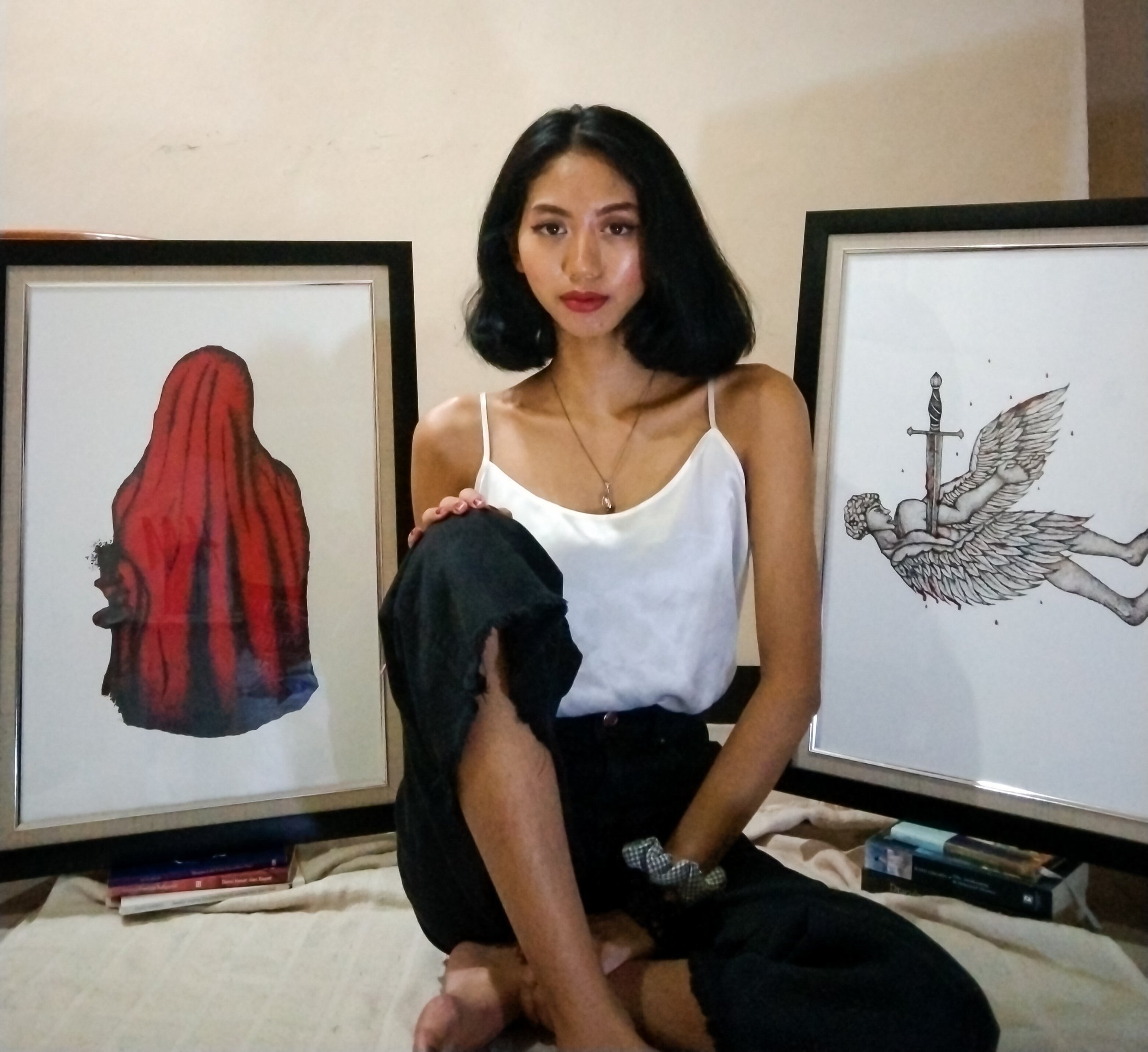Interview
Thalia Mutiara
Thalia Mutiara is an Indonesian artist, born in 1996. She is a completely self-taught artist, who works on illustrations.
Her signature technique is stippling - the creation of a pattern, simulating varying degrees of solidity or shading by using small dots. Her art is inspired by baroque and renaissance artworks, expressed in a gothic style.
What is your background and how did you start your journey in the art world?
“I'm a self-taught artist, and began my artistic journey when I was 5 years old, in kindergarten. There I joined a few drawing classes, and even participated in competitions. I was quite an active drawer, and loved using crayons, even creating some oil paintings too, but I stopped making art when I went to junior high school. Not until I was 18 did I start drawing again.
My first drawing after this was called ‘Putain de Monstre’. It was an abstract piece, and it felt great to create again after such a long period of being away from art. While I was still constantly developing my technique and style in art during this time, I would often experiment with painting, illustration, and drawing with colored pencils. Then, around 2018-2019 I found myself more intrigued by stippling (use of dots), and since then I've been creating illustrations, using the stippling technique. It is such a complex technique, so I am still mastering the art of stippling, and keep practicing to be better.”
Which artists influence you most?
“Roberto Ferri, Claude Monet, Yayoi Kusama and Michelangelo.”
What would you say inspires you most?
“The concept of death inspires me the most - I was always drawn to and fascinated by the idea. I know many people are scared of this idea, and judge me by this, but it does actually bring you more of life, and make you appreciate life more.
So, my art usually connects with death or something that could kill you whether mentally or physically, but then being reborn to be something beautiful. I love the color red - it makes my art feel more alive. But lately, I also feel inspiration from the renaissance and baroque era, so I often research those paintings and sculptures. Those eras produced such beauty, rich with emotions that the artists themselves magnificently captured.”
“To me, death is a kind of rebirth, so I find it beautiful as it brings so much peace and a transformation - as something to be remembered that can hold many memories.”
What is your creative process like?
“Most of the time my illustrations come from my imagination, a dream, or my desires and moods that I have felt on a particular day. Then I usually look up, through Pinterest, for some ideas and other inspiration before I put them down on paper. I use stippling as my technique, and this slow process can take a week or longer. I begin sketching my art with a pencil first, until I am happy with the shape for me to stipple all the lines in, and fill it with grades of shading.
And for my materials, I use pencils for sketching, and two different pens for the stippling. To add color, I will also use two red pens depending on the area. Once I’m done with the drawing, I scan it or just take a good picture of it, before I edit it a little in photoshop to get exactly the look I want.”
How would you describe your work?
“I would like to describe my work as dark imaginative illustration.”
What themes do you pursue? Is there an underlying message in your work?
“I would say my themes lean toward a gothic feel, because I want my art to be intrusive, but still in a soft way. Yes, many of my works are connected with how I have dealt with both myself and events that I have faced - the feelings, the emotions and mental state.”
What is an artist’s role in society and how do you see that evolving?
“In my opinion, artists tell stories, whether it's through emotions, unaccepted dreams, or even expressing the intrusive way of living, into the art itself. For me, art should be something to trigger a way of living, and to calm the heart or make you think. Sometimes you just need to see art to feel relief - but art doesn't need to always have a complicated meaning and can be for fun. I feel that art does evolve into more freedom, and a wider perspective from all angles. Now more than ever before, there is more mindful and inclusive art available, and this results in most people being open to art.”
Instagram: @thaliamutiaraart (art) & @thaaalc (personal)







